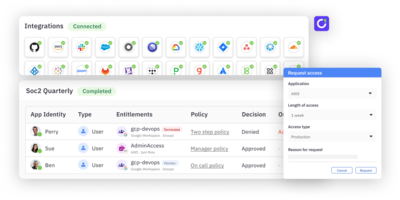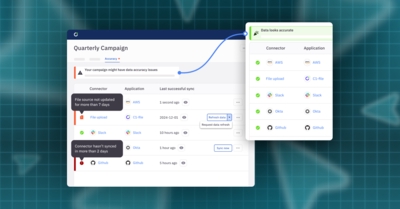According to Gartner, 50% of IGA deployments are distressed. This number might be upsetting—but it’s also not surprising. Fragmented identity stores, complex technology ownership, and diverse environments can make it challenging to implement traditional IGA solutions.
This is problematic for companies—longer implementation times not only delay the ROI of IGA solutions but create under-the-radar costs that extend beyond the financial cost of locking in a contract with the vendor.
In this blog, we’ll dive into the hidden costs behind delayed IGA implementations, the impact they have on organizations, and why customers need to demand more from their IGA vendors.
Understanding and Evaluating Hidden Costs
Delayed IGA implementations create at least three types of additional costs:
1. Extended Labor Costs
Let’s assume you purchase an IGA solution with the goal of having it up and running, with connectors for critical systems implemented, within three months. If the implementation is delayed and deployment takes five months, your IT and security teams will add an extra 66% to their allocated deployment time just to ensure the system goes live and functions as intended.
Additionally, delays in IGA implementation often necessitate short-term manual workarounds and interim solutions. This intervention is time-consuming and error prone and requires continuous IT and security team involvement, resulting in increased labor costs. Furthermore, the heightened risk of human error leads to a higher potential for security breaches and costly remediation efforts. A single breach during your IGA implementation can end up costing your organization a hefty multiple of the initial project cost.
Lastly, delayed deployments can have a dollar figure associated with external labor as well. This includes professional services, or third party consultants who are involved in assisting with the implementation. If you’re paying for these services, then a delayed deployment may require consultants to extend the period of their involvement, exceeding the initial budget you had mapped out for this project.
2. Opportunity Cost
Building on our example of a two-month delay in IGA deployment, let’s dive into a second hidden expense: opportunity costs.
As mentioned earlier, delayed deployments can divert IT and security resources into implementing manual workarounds and interim solutions. This prevents IT and security teams from driving innovation and business growth by taking attention away from other strategic initiatives, negatively impacting the organization’s bottom line. These initiatives can include:
- Cybersecurity enhancements such as conducting vulnerability assessments and implementing incident response plans
- Digital transformation initiatives such as adopting new technologies or improving end user experiences
- Compliance projects that involve achieving necessary standards within the organization to adhere to regulations mandated by frameworks such as GDPR, SOC2 or HIPAA
In essence, the opportunity cost of a delayed IGA deployment is the value that could have been created by investing time and effort in other strategic initiatives.
3. Poor Return on Investment (ROI)
A major metric companies look at when purchasing and implementing new IGA solutions is the return on their investment. This can be measured in a number of ways: increased operational efficiency, freeing up of additional IT and security resources for other projects, and an improved end user experience resulting in enhanced workforce productivity.
Delayed IGA deployments can decrease ROI by requiring additional resource allocation and unforeseen spending and reducing workforce productivity.
Let’s extend our previous example: Assume your company spends $300,000 on a three-year contract with an IGA vendor, but as a result of a delayed deployment, the solution and relevant connectors do not go live until the second year of the contract. This result has two outcomes:
- You were not able to achieve the initial goal of implementing a robust IGA solution in the year it was purchased, pushing that goal out to the following fiscal year.
- Your spend on the contract might be reflected as $100,000 a year over three years, but in reality you’re spending $150,000 a year over just two years.
These outcomes can end up derailing your IGA roadmap and result in a poor return on investment across multiple initiatives.
The Cost of Delayed Security Outcomes
One of the most significant repercussions of delaying an IGA deployment is a weakened security posture. Without a robust IGA solution in place, organizations are more susceptible to identity-related threats. Compromised identities can serve as a gateway for cybercriminals to infiltrate an organization’s network, steal sensitive data, and disrupt operations. Threats can range from simple credential theft to sophisticated attacks targeting privileged access—the recent Snowflake attacks are just one real-world example.
The financial consequences of breaches go well beyond the hidden costs mentioned above, encompassing costs related to data recovery, legal fees, public relations, and lost business. Moreover, the damage to an organization’s reputation can be long-lasting, impacting customer trust and loyalty. According to IBM, the global average cost of a data breach in 2023 was USD $4.45 million.
Why Customers Should Demand More from Their Vendors
In the modern world of SaaS, slow deployments should be a thing of the past. Implementations are smoother than ever, with many tools across security, infrastructure, and productivity able to go live immediately or within days or weeks at the most.
Modern IGA vendors need to understand how companies work today and prioritize customer success by ensuring quick, simple deployment of solutions that create ROI immediately. In a recent episode of the All Aboard podcast, popular identity influencer David Lee, aka the Identity Jedi, talks about why there’s no longer an excuse for IGA vendors who can’t show value within the first 90 days.
You can check out a clip from the episode below:
Check out the full episode on Youtube or listen here
Conclusion
Delayed IGA deployments can result in a multitude of hidden costs, including diverted mission-critical resources, reduced productivity, and costly security vulnerabilities. It’s important to consider factors such as time to value and ROI when evaluating IGA vendors to prevent your company from incurring unforeseen costs and poor security outcomes.
To learn how ConductorOne can help you implement a modern IGA solution with ease, take a product tour or chat with us!
And check out our Guide to Modern IGA to find out how modern identity security solutions are improving on implementation periods to provide customers with quick time to value and a better ROI.






